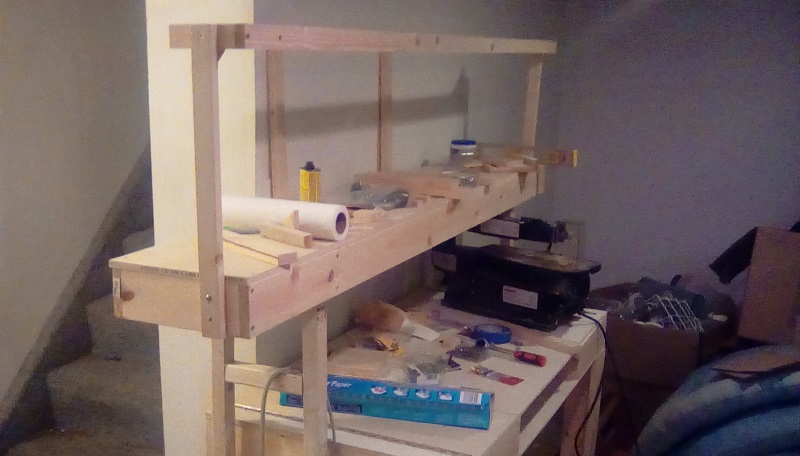First, an introduction of myself: you can call me Brock (or Hey You, if you prefer). I've been reading here regularly, but commenting little. Over the last few months, I've been getting back into model railroading for the first time since my early teens, when I had a Ye Olde 4x8 that my dad built for me. Unfortunately, that got sold during a move, and I just never got back into building something to replace it. That is now changing.
Back in November, my wife and I were on vacation and got stopped at a grade crossing by two trains. I made an offhand comment about the omnipresent soulless AC44s that spiraled into a two day discussion about trains and eventually model railroads, which eventually culminated in me saying "I should get back into that..." and my wife saying "Go for it, I think it might be fun to help!"
I immediately planned how to fill my basement, and then thought better of it. I have plenty of space: once I clean it out, I have an 8'x12' area that I can fill with a fairly respectable little layout. But my budget is... well, not really up to that challenge yet. Not to put too fine a point on it, but I have about $30 a month that I can spend on hobbies - and I'm sure you all know how far that doesn't go!
With this outlook in mind, I happened across Carl Arendt's website and discovered the micro-layout. I wasn't originally a fan, since I'd prefer to model longer trains moving through scenic environments, rather than a small switching layout.
But the idea grew on me. I sometimes have problems finishing projects, and so I decided to make my model railroad large enough to entertain, but small enough to be easily-completed. I know the same theory holds true for TOMA, which is what I intend to do when I graduate from the learner's classes.
For now, my goal is to run a train by the end of 2018, and deliver a completed layout, something I can be proud to show off, by the end of 2019... while spending less than $600-700 on the whole thing. I already have a bit of HO scale equipment, so this may not be quite as desperate as it sounds.
Thus I've started work on 'the Smyrna Spur', sized at a very petite 1'x6'. Smyrna, circa 2005, is a fictional eastern Iowa town served by the Iowa, Chicago, & Eastern Railroad. On the far side of town from the IC&E mainline is the Smyrna Farmer's Co-op, one of Smyrna's few remaining rail-served industries.
The Co-op is served by a mile-long spur that runs through the outskirts of town. Usually, a single locomotive - one of the IC&E's GP40-2s, or perhaps an occasional SD - will move a few cars every week up the spur to the Co-op, dropping empties and retrieving loads, which are dispatched to Gavilon Grain in Dubuque, or to ethanol plants elsewhere in Iowa.
For a trackplan, I've decided to borrow and mirror Chris Gilbert's New Haston plan. (See link for details and image.) A great deal of my inspiration has come from viewing some of Gilbert's other small designs. It wasn't until I saw a video of his Haston Nomad layout in action that I was convinced I could build such a small layout while retaining a rural feel.
So far, I've constructed most of the benchwork using 1/2" plywood on top of a base made of 1x4s. My next step is to place a layer of foam before I start tracklaying on some free weekend in July... once I order and receive everything I need. You can get a view of my work thus far in the photo below; my apologies for the quality.

The layout will operate on DC. It's not my first choice - I'd really like to get one of those nifty ProtoThrottles, but I'd spend two years worth of my budget just saving up for all of the parts. For $45, I found a DC-only Athearn GP40-2, currently in Union Pacific colors; I'll modify and repaint it as ICE #4200 City of Kansas City. I also have an old Athearn blue-box SD40-2 somewhere in my parents' basement (...I hope!) that I'll repaint to ICE colors.
Ultimately, the mediocre lighting valence shown in the picture above will also be fixed, as I'm going to set the layout up with a shadowbox-style fascia and overhead LEDs. I'm going try to scratchbuild my structures on the cheap using printed cardstock; I'll re-evaluate if that doesn't turn out well.
Most of my nervousness is reserved for wiring, as I'm unskilled in electrical work of any sort. I hope that the layout's small size will make wiring less difficult than I expect...
Thoughts, comments, encouragement and (gentle) criticism are welcomed!

Thanks, BCP